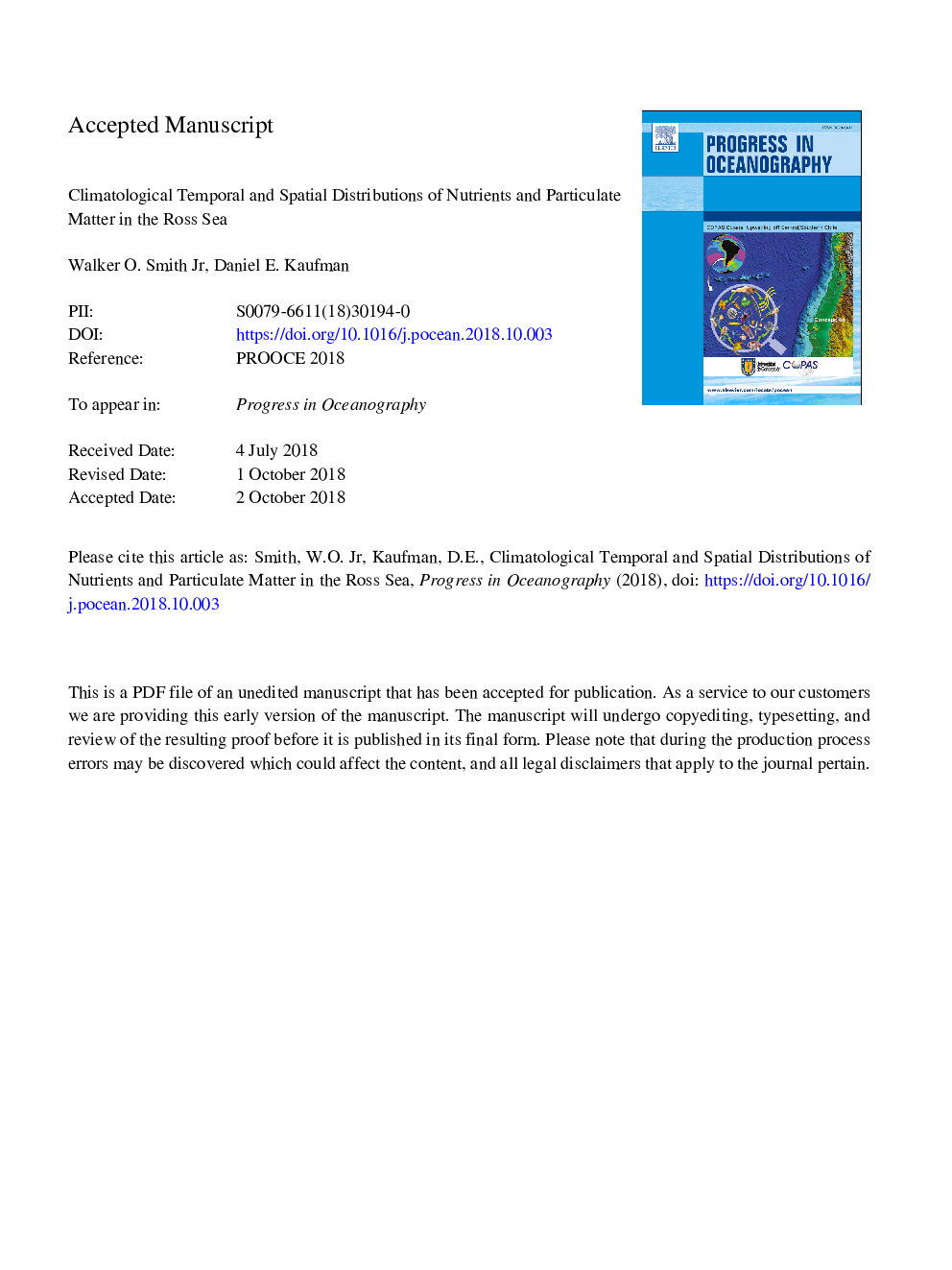| کد مقاله | کد نشریه | سال انتشار | مقاله انگلیسی | نسخه تمام متن |
|---|---|---|---|---|
| 11024878 | 1701065 | 2018 | 48 صفحه PDF | دانلود رایگان |
عنوان انگلیسی مقاله ISI
Climatological temporal and spatial distributions of nutrients and particulate matter in the Ross Sea
ترجمه فارسی عنوان
توزیع فضایی و زمانی در مواد غذایی و مواد مغذی در دریای راس
دانلود مقاله + سفارش ترجمه
دانلود مقاله ISI انگلیسی
رایگان برای ایرانیان
کلمات کلیدی
موضوعات مرتبط
مهندسی و علوم پایه
علوم زمین و سیارات
زمین شناسی
چکیده انگلیسی
The distributions of nutrients, chlorophyll (chl), particulate organic carbon (POC), particulate organic nitrogen (PON), and biogenic silica (BSi) were compiled from 42 cruises to the Ross Sea continental shelf to generate a monthly climatology. Nutrients were elevated in spring and removal began in early spring (November) and continued through December, at which time nitrate and phosphate removal largely ceased. Silicic acid concentrations also began to decrease in November, but continued throughout the summer. Chlorophyll concentrations increased simultaneously with nitrate removal and became maximal in December, after which time they decreased. Concentrations of chlorophyll remained relatively low and constant through February, although smaller regions remained elevated and contributed to the expected substantial spatial variability. Particulate organic carbon and nitrogen concentrations paralleled chlorophyll concentrations through the spring maximum, and also decreased in early summer. However, a notable increase in particulate organic carbon occurred later in summer that was largely independent of chlorophyll changes, resulting in a dramatic rise of POC:chl ratios. Biogenic silica concentrations were low through December but continued to increase throughout summer. We suggest that the spring pigment and particulate matter concentrations resulted from phytoplankton blooms dominated by the haptophyte Phaeocystis antarctica, consistent with repeated observations in the region. We further suggest that the late summer POC increase was due to growth of diatoms that exhibited enhanced POC:chl ratios due to iron limitation. POC concentrations in late summer were similar to those in spring, indicating that the summer bloom was substantial. Estimates of productivity from a bio-optical model using variable POC:chl ratios suggest that the summer blooms may be a significant contributor to seasonal productivity, and that estimates of productivity based on satellite pigments underestimate annual production by at least 70%. Satellite productivity estimates have substantial uncertainties in the Ross Sea and need to be constrained using in situ constituent ratios.
ناشر
Database: Elsevier - ScienceDirect (ساینس دایرکت)
Journal: Progress in Oceanography - Volume 168, November 2018, Pages 182-195
Journal: Progress in Oceanography - Volume 168, November 2018, Pages 182-195
نویسندگان
Walker O. Jr., Daniel E. Kaufman,
